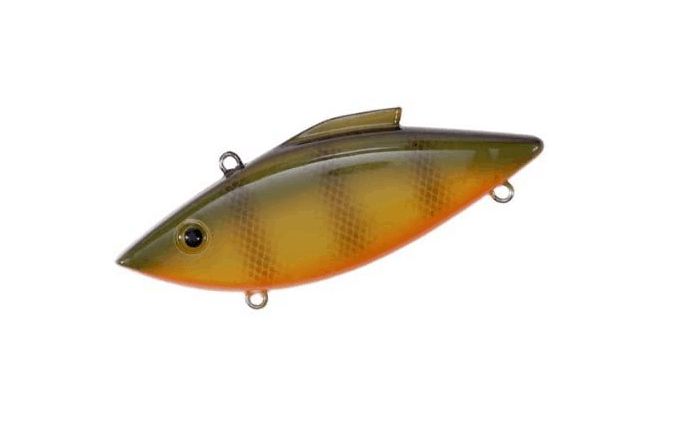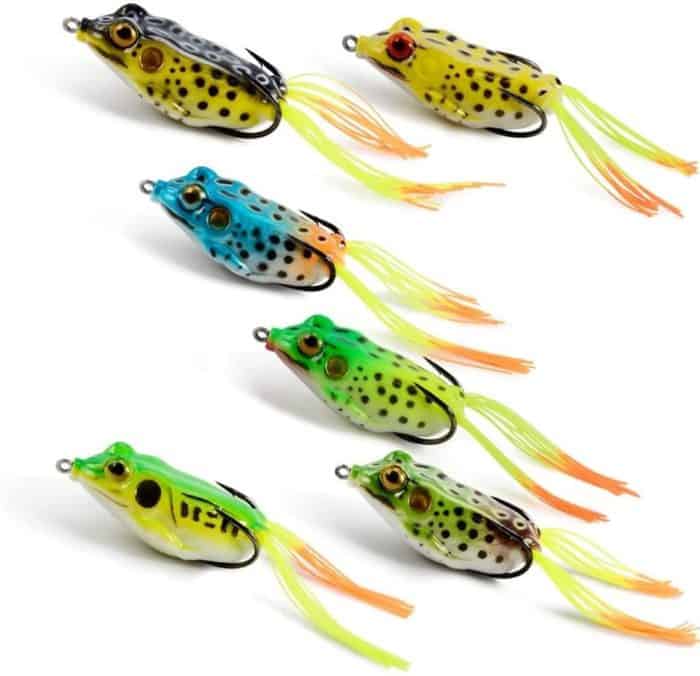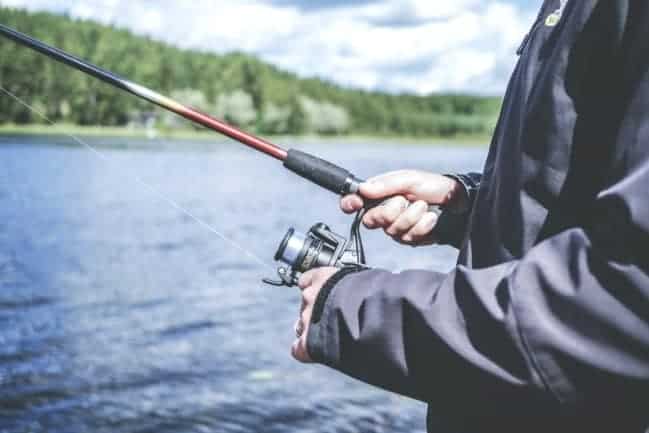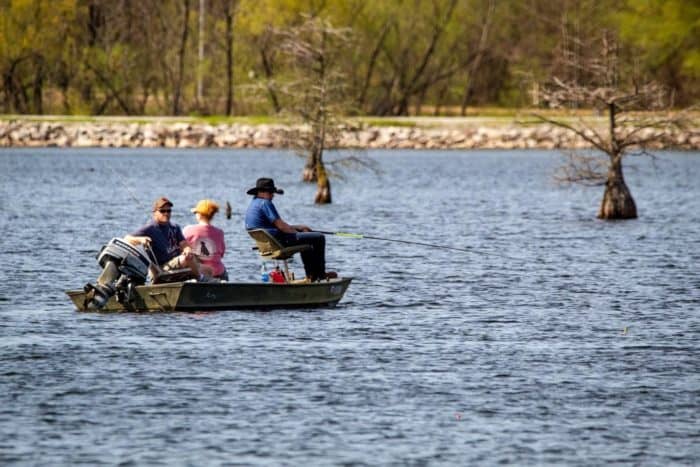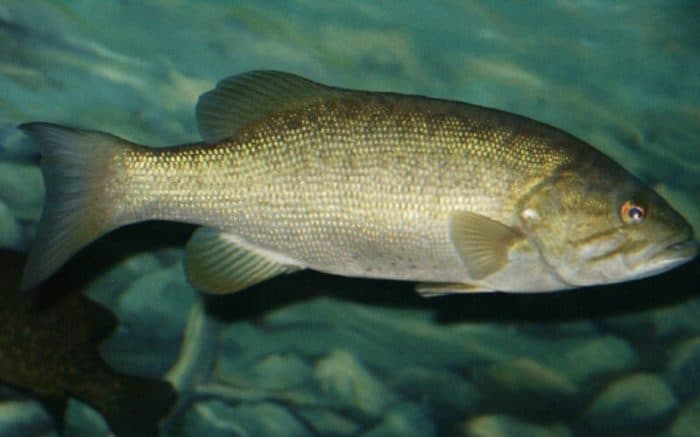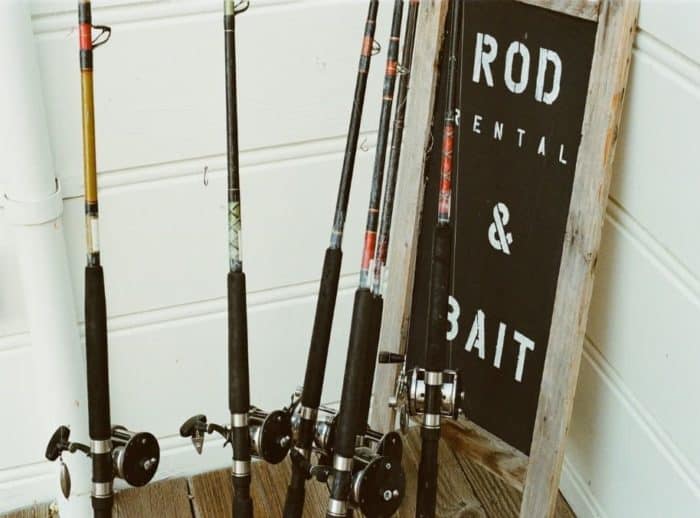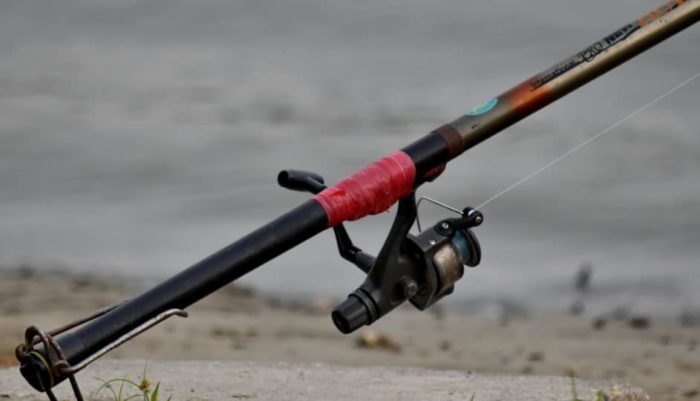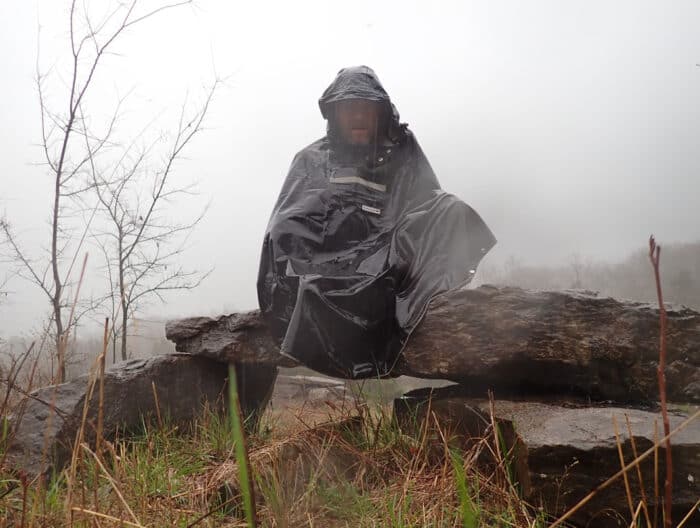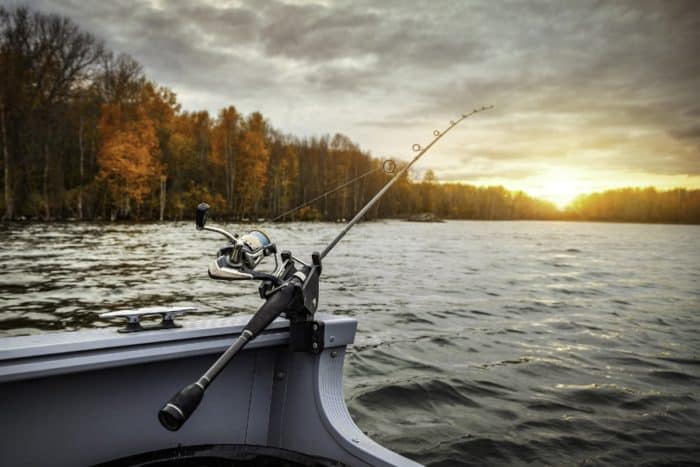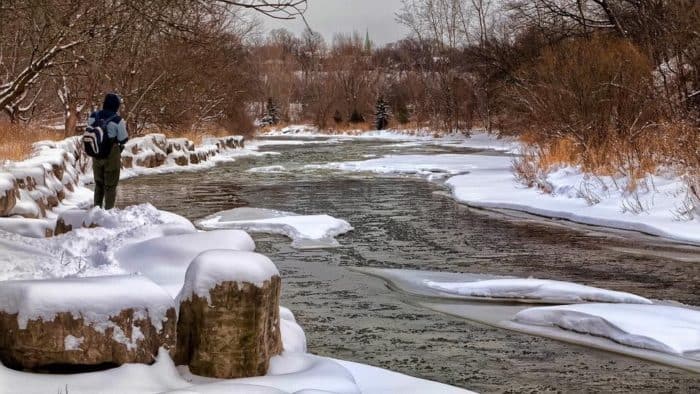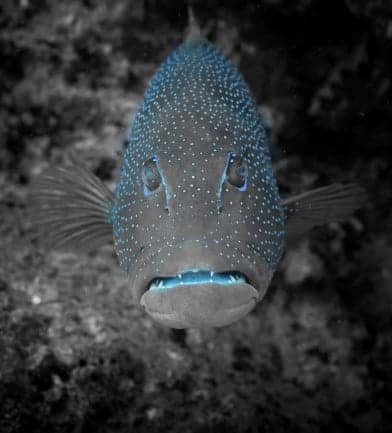How to Fish Lipless Crankbaits: Ultimate Guide
When it comes to bass fishing, many anglers prefer fishing crankbaits. But not all crankbaits are the same. And catching bass whether with regular crankbaits or lipless crankbaits takes some skill. You need to know the best method for fishing lipless crankbait if you want to be successful. That includes knowing things like:
- What’s the best water temperature?
- Should you look for submerged vegetation or avoid it?
- Is a medium heavy action rod best, or something else?
Let’s take a look at everything you need to know to successfully fish lipless crankbaits.
What Are Lipless Crankbaits?
A normal crankbait is actually easily identified by its lip. The lip causes the bait to dive as it’s reeled in, mimicking prey movements. A crankbait with a long lip is usually a deep diving crankbait. It can go much deeper than a short-lipped crankbait. The angle of the lip also affects this. In general, though, they’re designed to reach specific depths. These depths let you target specific fish, like largemouth bass, for instance. Crankbaits are flat sided lures.
The bait is usually shaped like a small baitfish. Most lipless crankbaits have two treble hooks on them. There will be a split ring on top for tying a line on.
If the lip on a crankbait is what makes it work, what is a lipless crankbait? A lipless crankbait is also called a rattle bait. It is actually more versatile than a regular crankbait. It’s called a rattle bait because there is a metal weight inside. That causes it to make noise as it moves back and forth. The faster you reel it in, the more it’s going to vibrate. That means you can learn to adjust your retrieve for better results. It will help you more accurately mimic those shad and crayfish they resemble. This is something best learned with practice. You’ll see over time which technique makes the fish respond better. Every angler has their own hints and tips for getting this down perfectly. It’s just like which lure, which line, which bait and which fishing hole is best. It can be a lot of fun working out which works best for you.
The lip on a normal crankbait keeps it in a certain depth range. Your lipless crankbait has a much greater range. Professional anglers are able to control the depth of their crankbait as they reel it in. A steady retrieve lets you keep the lipless crankbait at a constant depth. If you speed up or slow down, it will cause the crankbait to dive or rise.
Because of the control you have over a lipless crankbait, you can use them almost anywhere. They can be retrieved right over weeds like a swim jig. Their natural lack of buoyancy is what makes them desirable. Again, it all really depends on the kind of fish you want to catch, though. But for deep bass the lipless crankbait is such a good choice. And for those suspended fish right in that sweet spot in the middle, they’re also ideal.
Is it Better to Fish Lipless Crankbaits?
Ask 100 anglers what the best lure is, and you’ll get 100 different answers. Is the lipless crankbait the best for bass? Is it better than a regular crankbait? Some anglers say yes, other anglers say no. That said, the lipless crankbait is just hugely versatile. For our money, there’s not much better on the water. There’s always going to be a place for things like a Texas rig or a Carolina rig. Various lures are needed to adapt to different situations. But the lipless crankbait can offer a lot more than many other lures.
To start with, these work anywhere in the water column. You’ll find most fishermen want to keep their lipless crankbait in just 10 – 15 feet of water though. You can take the lipless crankbait to depth and then reel in for a fast retrieve. Long casts make this a great choice because the lure will stay in that strike zone for a long time. They handle well on the surface for a very fast retrieve if that’s how you want to fish, though. When they skim right over the grass, it can cause a lot of excitement for the bass below. That will get their interest and will generate some strikes.
With no lip on these crankbaits, you have a much better control of vertical movement. Remember, the lip is designed to keep a crankbait at a certain depth. It provides a very specific kind of motion. The lipless crankbait can really be directed from the depths to the surface with ease. That kind of precision lets you better target your fish. And for the fish, it makes the lure that much more realistic. You can have your lip[less crankbait respond like a real shad or bluegill. Once you have a real feel for what you’re doing, you’ll be able to zero in on your target and get the fish you want easily.
You can also benefit from bombing casts. Drop your lipless crankbait in and try a yo yoing technique. Bass are almost guaranteed to show an interest in your crank bait as it yo yos up and down.
For all the benefits of the lipless crankbait, there really are few drawbacks. It’s not perfect for every fish, of course, but it’s easily one of the top lures in any tackle box. The thing is, you need to understand how it works. That’s true of any lure, though. We think the best way to truly understand how to fish a lipless crankbait is to try it. We’ll do our best to explain the techniques, but you need a feel for it.
Once you have a fishing rod in your hand, and you feel the way the rod tip responds, it’s a whole different ball game. But it’s like any skill, right? Practice makes perfect. Read about how to do it, then try it yourself. After a few casts you’ll have a feel for how they retrieve. Once you know how a lipless crankbait behaves in the water, it’s so much easier to really enjoy using one.
How to Yo Yo a Lipless Crankbait
Most people have a rough idea of what yo yoing means. But if you’re not 100% sure, don’t worry. You want to cast in deep water for this to work. Once you’ve got that down, you need to just work the tip of your rod. Use the clock method here. Hold your rod so the tip is at the 9 o’clock position. That means the tip is pointed straight out from your body. Then, give it a pull up until the tip is at the 11 o’clock position. Let the lure fall back down again as the line starts to go slack. Repeat this as you retrieve the lure.
This up and down motion looks enticing to a bass. It’s the same motion they’re used to seeing from a crayfish as it’s fleeing. It’s also similar to the movements of a dying shad. Both of those present easy prey for a bass.
It can take a bit of practice to get a feel for the right rhythm here. You can try it faster or slower and see which has the best results where you’re fishing.
Tips for Fishing Lipless Crankbaits
There are various techniques that make fishing lipless crankbaits easier. Or more productive. Both of those are what you want, of course.
Pick Your Season
Can you have success with a lipless crankbait at any time of year? Probably. But you can always maximize your success by choosing the right time. Because a lipless crankbait is really designed to work best in shallow water, you can adapt to that. They also really do well in cooler water temperatures. This is because of how the crankbait wobbles. It’s going to be most attractive to bass when it’s being used in cooler waters. Think somewhere between 50 degrees and 60 degrees. That’s about 10 degrees Celsius to 15 Celsius.
So ideally, you’re using your lipless crankbait in fall or spring. You can probably squeeze into early spring and late fall. The profile and movement of a lipless crankbait looks like several prey species. Bass are going to hit on this as crawfish, shad, or bluegill. A red lipless crankbait really hits the mark for a crawfish. Most kits that you can buy featuring several cranks will always have at least one red.
If you want to fish in the summer, then you want to hit those weeds. Aquatic plants are in their prime in the hot summer months. This is a great time to cast long and pull the crankbait in, right on top of the grasses. You can also target the edges as well.
Choose a Spot
Bass love cover. If you’re new to bass fishing in general, this can seem intimidating. They love to hang out in the grass. But, for new anglers especially, this is scary stuff. No one wants to lose a lure in the weeds. Especially a lipless crankbait! It’s got those two treble hooks just dangle freely. It seems like a recipe for disaster. Just remember, that’s what these lures are meant to handle. The lipless crankbait is as at home in the grass as those bass are. You don’t have to try a lipless crankbait in a place full of grass and weeds. But you’re seriously missing out if you don’t. Remember, this is what they’re made to do. And this is where you’re going to find the bass.
You want to let your crankbait hang just around the top of that grass. It may get snagged a little and that’s OK. Just jerk the rod tip a little to get the lure moving the way you want it to. A fast tip will get the lure to rip free of the grass. The motion is going to get the attention of every bass in the area.
Deeper waters can also work for rattle baits. As we mentioned earlier, you don’t need a straight retrieve. If you’re looking at deeper water, try the yo yo technique.
While over the top and to the sides of grass work, they are not the only options. A good lipless crankbait can cut through those weeds too. You need a little more confidence in your technique here, but that comes with time. When you tear right through the center of the grass, it’s a real challenge to those bass. They see the lure and their instincts take over. It provokes that strike reaction. Your lure bursts right into their field of view. They see it, they hear it, they feel its motion in the water. It’s mimicking some of their favorite prey. And because of that fast action, they have to have a split second reaction. The result is that more often than not they’re going to strike.
This is why fishing the weeds is such a good idea. Not just because it’s where the fish are, but obviously that’s big too. The nature of the cover means the fish have to make that quick strike motion if they want to feed. You’re using their own instincts against them. Call it a little fish psychology, if you will. But it’s highly effective. It’s why many lipless crankbaits have proven their worth time and time again. And that’s why you always want to make sure you have some in your tackle box.
Pick a Time
It’s usually easier to catch bigger bass earlier in the day. Big bass got big because they’re smart. They didn’t get caught in the middle of the day by some eager angler. These fish know to eat under the cover of night. In the dark, they have some security. Bass are opportunistic and a little crafty, don’t forget that.
At first light, you should have the best luck if you want bigger fish. Ideally, you can get them in the spring at this time of day. They endured a winter with little food, so they’re hungry. And they’re going to want to lay low during the light of day. So first light is when they’re going to be putting the last effort into the hunt. It’s the best time to track them down.
Now you can catch bass any time of day. Evening can also work because they’re going to start coming out again as well. But if you don’t want to be fishing in full dark, early morning is best.
Afternoon fishing is always an option as well. But we’ve probably all endured a long, drawn out fishing session. One of those in the middle of the day that was just very slow going. Fish want to avoid predators, and in full light that’s when they’re most vulnerable. So you’ll need some more patience if you want to try your hand at high noon.
Pick Your Set Up
You’re not just going to dangle a fishing line off of your finger with a lipless crankbait. Choosing the right rod and reel can really affect how you fish. Even the line will have an overall effect on the way your lipless crankbait works.
Now we will take this opportunity to say do not stress over this. This is 100% a place where the professional anglers and casual anglers differ. If you’re not out there fishing for a trophy bass, don’t worry. You don’t need to invest in a new rod and reel if yours has been working fine for you.
Gear Ratio
If you are looking for a new set up, then there are some good ones. To get the most out of fishing crankbait you’ll probably want a quality high speed reel.
For most anglers, something with a 6.1:1 ratio is best. This is the ratio used to explain how much the spool turns when you turn the handle. In this case, every time you spin that handle once, the spool turns 6.1 times. That’s a reasonably fast reel, all things considered.
In terms of gear ratios, anything below 6:1 is generally slow. Too slow for a crankbait, anyway. If you want to get serious, then boost your gear ratio to 7.1: or higher. If you’re new to bass fishing, or crankbait fishing, don’t rush it though. That midrange ratio of 6.1:1 is a good place to start. If you are comfortable with that ratio, then consider bumping it up. You can move up to something faster later.
Rod Choice
A medium heavy action rod is ideal for most lipless crankbait fishing. A fast tip is ideal. There is some debate here though so we’re not saying you need this by any means. There are definitely some anglers who would lean into a medium rod. And those who actively avoid a fast tip. That’s why it’s hard to recommend a single, perfect setup for lipless crankbait fishing. You may have just as much luck with a good fiberglass rod. But you can find a good bass fishing rod that will work for you.
A heavier rod is usually best when you’re in the weeds. Heavier than what you’d normally use with a similar treble hook lure. It just needs the tip to balance it out. So a stiff, heavy rod needs some flexibility in the tip. If it’s too flexible all the way through, it’s no good. If it’s too stiff, it won’t work well either. You need to be able to get some pop in there.
If you like the long casts, try a longer baitcasting rod. Seven feet or more should work well for you here. When grass is less of a concern and you’re slow rolling in open water, you can switch it up. In this case, a moderate action crankbait rod is great.
Line Choice
If you want to go for a fast tip, adjust your line to match. Try a 15 lb monofilament line. You can bump up to a 20 lb line if you like. This should allow you to pull use from vegetation if it becomes a problem.
If you don’t want the fast tip, try braided line. Use this with a more moderate rod. You should still be able to pull free of any weeds you get stuck in with this set up.
Most anglers will opt for fluorocarbon fishing line. It offers really good abrasion resistance. This is important when you’re going through all those weeds. It also has a good stretch to it. The same weight is good here as well. Try between 15 lb and 20 lbs. You could go a little lower but we wouldn’t recommend going below 12 lb with your fishing line.
The Bottom Line
If you’re a serious angler, you need a lipless crank in your tackle box. And if you’re not so serious, you still need one or two. These are great lures that can make bass fishing a lot of fun. Whether you’re relaxing on shore, sitting in your bass boat, or angling in a tournament. Mastering fishing with a lipless crankbait can be very rewarding and a lot of fun. Get out there and try your hand at it, you’ll be glad you did. As with anything, practice makes perfect. Don’t be dissuaded if you don’t have the hang of it at first. There’s some skill and finesses needed to make a lipless crankbait work. But once you have the hang of it, you’ll see just how good the lure can be. As always, stay safe and have fun.
Categories: Fishing
